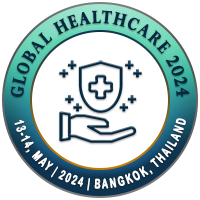
Anoop A K
Arya Vaidya Sala Kottakkal, IndiaTitle: Ayurvedic view of Hypertension and it's management
Abstract
Hypertension (High blood pressure) is ranked as the third most important risk factor for attributable burden of disease in south Asia 1. Hypertension (HTN) exerts a substantial public health burden on cardiovascular health status and healthcare systems in India. Overall prevalence for hypertension in India is 29.8% (95% confidence interval: 26.7–33.0). Significant differences in hypertension prevalence were noted between rural and urban parts of the population. [27.6% (23.2–32.0) and 33.8% (29.7–37.8); P = 0.05].2 It is estimated that at least one in four adults in India has hypertension, but, only about 12% of them have their blood pressure under control. India has set a target of 25% relative reduction in the prevalence of hypertension (raised blood pressure) by 20253.
HT Kot tablet is used in the treatment and management of hypertension. HT Kot contain 3 ingredients namely jadamamsi (Nardostachys Jatamansi), Sarpagandha (Raufolia serpentine) and Ruraksha (Elaeocarpus sphaericus). It is observed that HT kot helps in improving the cardiovascular functions. It is also observed that HT Kot helps to reduce nervousness and anxiety. A descriptive cross sectional survey was done among Ayurvedic physicians in different parts of India. Out of 128 physicians, 86 (67.18%) physicians having more than 10 years of experiences.
Survey reveals that majority of the physicians (more than 75%) opined that HT kot is effective in stage 1&2 hypertension. The added effect of HT Kot is that it helps to improve the quality of sleep, reduce hyperactivity in children and anxiety. Majority of the respondents opined that the ideal time of administration of HT kot is after breakfast and dinner. The combination therapy with HT Kot is good in many conditions like hyperactivity, nervousness, hyperacidity and fatigue. The present article is based on the survey conducted among the Ayurvedic practioners in different parts of India, to assess the effectiveness and additional benefits observed with HT kot.
Biography
Dr Anoop. A. K was born in Kannur, Kerala. He completed his graduation from M.V.R Ayurveda Medical College Parassinikkadavu, Kerala (affiliated to Kannur University) in the year 2010 and Post graduation in Samhita, Sanskrit and Sidhanta from Govt. Ayurveda College Thiruvananthapuram (Kerala University of Health Sciences) in the year 2014. Currently he is doing his Ph.D in Ayurveda Samhita and Sidhanta at Parul University, Vadodara, Gujarat.
He has published more than 25 articles in International peer reviewed journals and presented papers in various scientific seminars. He has published a book named “Postgraduate textbook of Samhita and Sidhanta” by Choukhambha publications and a book chapter named “Symptoms of Apana vayu vaigunya in Persons undertaking Atiyana” in the book “Current Aspects in Pharmaceutical Research and Development “by BP International publications.
He has worked as an Assistant Professor in the Department of Samhitha, Sanskrit and Sidhanta at VPSV Ayurveda college, Kottakkal from 2017 to 2022 and currently he is working as the Deputy Medical Officer in the Clinical Research Department at Arya vaidyasala, Kottakkal.

